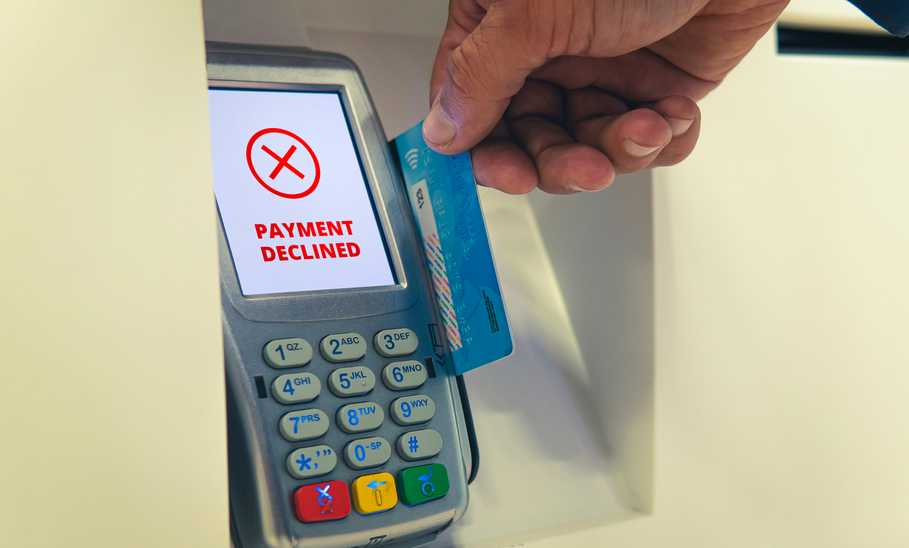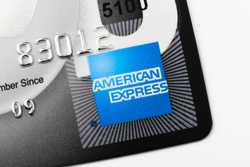8 Reasons Your Credit Card Was Declined (And What To Do About It)


Our evaluations and opinions are not influenced by our advertising relationships, but we may earn a commission from our partners’ links. This content is created by TIME Stamped, under TIME’s direction and produced in accordance with TIME’s editorial guidelines and overseen by TIME’s editorial staff. Learn more about it.
You’ve loaded up all your groceries onto the belt and the cashier has finished scanning them. They tell you the total and you tap your card. Only instead of getting the typical “approved” message, the cashier tells you the card was declined.
Sometimes, no matter how careful you are, your credit card may be declined. Before you get frustrated and upset, remember that your card didn’t get approved for a reason. Here are some of the most common causes for your card being declined and what you can do about it.
Sometimes when you enter your credit card details, you might inadvertently mess up a few of the numbers. This may happen more with online purchases, especially if you have to manually enter your credit card information.
Before hitting the final purchase button, review your credit card details, including the card number, your mailing address, authorization code, and any other information. If you have a virtual wallet, see if the retailer allows you to check out with things like Apple Pay so you don’t have to provide all of these details again.
Most credit cards have a credit limit. If you’re new to the credit card game or have a secured credit card, you might have a low limit compared to someone who has had the same credit card for many years. That means after you make a few purchases, you might hit your limit fast.
To avoid this, keep tabs on your limit and spending for that card. A good rule is to keep utilization at 30% or lower. This shows credit bureaus you’re not maxing out your credit limits, and it shows your issuer that you’re responsible with credit. The higher your credit usage, and if you carry a balance from month to month, the riskier you look to your credit card company. This can cause your score to drop and hurt your chances of increasing your credit limit in the future.
Credit cards have an expiration date and if you attempt to use a card after it's expired, it’ll get declined. This also happens if you’ve received a new card in place of an old one and your old one deactivates. Even if it hasn’t expired, your old card will deactivate after a certain amount of time has passed, prohibiting you from using it.
Not activating your new card will also result in a declined transaction. Any time you get a new card, you’re required to activate it. Check to see how to do this when you get your new card. There’s usually a sticker on the card that includes directions, like a number to call or a website to go to. Activate your card now so when you’re ready to use it, you don’t get declined.
Some credit card companies require you to tell them when you’re traveling, whether that’s to another state or another country. This lets them know that the purchases made in that area are, in fact, by you, and aren’t fraudulent.
This isn’t required by all credit card companies and in many cases, is only a suggestion. But giving notice to your credit card company means you don’t have to experience a declined credit card when traveling.
One good thing about transaction history is that it tells your issuer what you regularly purchase. If you’re trying to make a large credit card purchase of a kind that you’ve never made before, your issuer could flag it as potential fraud and decline the purchase.
If you already have plans to make a very large purchase and don’t want to experience any setbacks during checkout, you might want to give your credit card company a head’s up that you intend to make the purchase.
If you fall behind on payments or you’re notoriously late on making payments, your credit card issuer could freeze your account, prohibiting you from making any more purchases. Even if you haven’t reached your limit, you’re required to make at least the minimum monthly payment so your card stays in good standing. Good standing gives you the chance to use your card as you see fit, so falling behind on payments could hold you back.
If you’re trying to use a card you haven’t used in awhile and the card gets declined, there’s a chance your account was closed without your knowledge.
Issuers can close inactive accounts, or accounts that haven’t been used in a set amount of months or years. To avoid your account closing without your knowledge, set up the card to auto-pay one or two regular purchases, like a streaming subscription or your phone bill, and then pay off the card in full every month.
Sometimes this happens by mistake but you’ll need to contact your issuer to resolve the issue.
When things don’t go according to plan, it’s easy to get flustered and uncomfortable. Take these steps to avoid a mess.
Before your card has the chance to be declined, you can set yourself up for success by:
Car rental companies and hotels often put a block — or hold — on your card as a down payment or deposit. Even if you are going to get that money refunded when you return the car or check out of the hotel room, the hold can reduce the amount of credit left on your card. And when you make a purchase, you may not realize you have less credit available that you thought.
Ask the company you’re buying from when the block will be removed and how long you can expect it to last.
Getting your credit card declined is bad if you don’t have any other means to complete your purchase. But getting declined isn’t always your fault. Sometimes it’s because of the place you’re buying from or even the credit card issuer.
The information presented here is created by TIME Stamped and overseen by TIME editorial staff. To learn more, see our About Us page.



